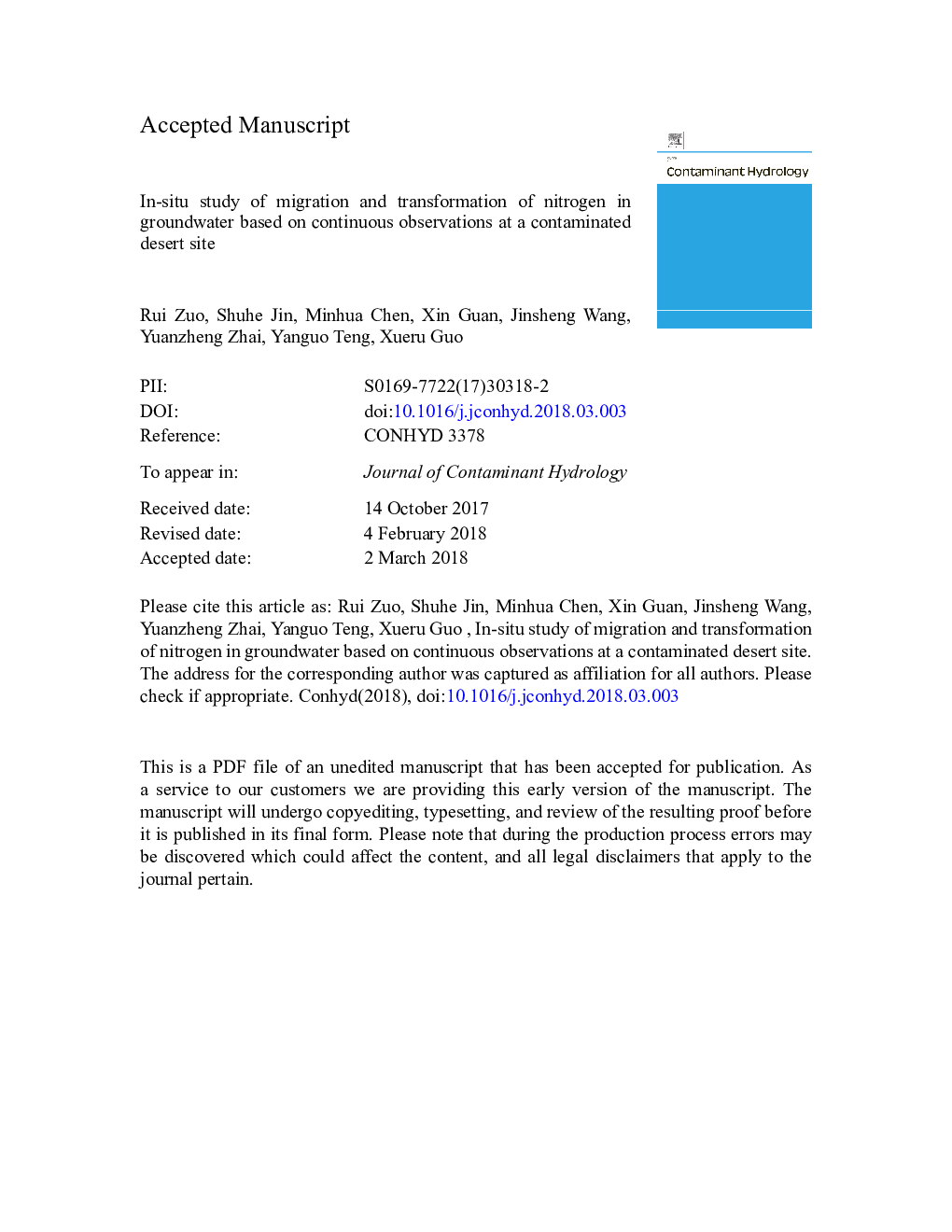| Article ID | Journal | Published Year | Pages | File Type |
|---|---|---|---|---|
| 8885825 | Journal of Contaminant Hydrology | 2018 | 26 Pages |
Abstract
The objective of this study was to explore the controlling factors on the migration and transformation of nitrogenous wastes in groundwater using long-term observations from a contaminated site on the southwestern edge of the Tengger Desert in northwestern China. Contamination was caused by wastewater discharge rich in ammonia. Two long-term groundwater monitoring wells (Wells 1# and 2#) were constructed, and 24 water samples were collected. Five key indicators were tested: ammonia, nitrate, nitrite, dissolved oxygen, and manganese. A numerical method was used to simulate the migration process and to determine the migration stage of the main pollutant plume in groundwater. The results showed that at Well 1# the nitrogenous waste migration process had essentially been completed, while at Well 2# ammonia levels were still rising and gradually transitioning to a stable stage. The differences for Well 1# and Well 2# were primarily caused by differences in groundwater flow. The change in ammonia concentration was mainly controlled by the migration of the pollution plume under nitrification in groundwater. The nitrification rate was likely affected by changes in dissolved oxygen and potentially manganese.
Related Topics
Physical Sciences and Engineering
Earth and Planetary Sciences
Earth-Surface Processes
Authors
Rui Zuo, Shuhe Jin, Minhua Chen, Xin Guan, Jinsheng Wang, Yuanzheng Zhai, Yanguo Teng, Xueru Guo,
